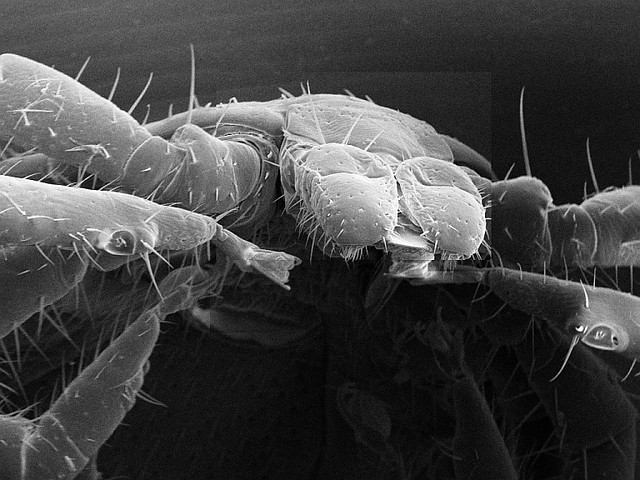| MIDICHLORIA AS THE ANCESTOR OF MITOCHONDRIA Article from The Hitchhiker's Guide to the Quantum World |
last update: Sept. 14 '17 |
 MIDICHLORIA AS THE ANCESTOR OF MITOCHONDRIA
MIDICHLORIA AS THE ANCESTOR OF MITOCHONDRIAThe Ixodes tick (on the left) lives in a symbiotic relationship with MIDICHLORIA, a type of bacteria. We, as humans, live in a symbiotic relationship with mitochondria, which has it's own DNA. Midichloria is the ancestor of mitochondria, the powerhouse that fuels every living cell in the known universe, including you and me. Seriously. :-) Midichloria is a Gram-negative, non spore-forming bacteria, with bacillus shape around 0.45 Ám in diameter and 1.2 Ám in length. First described in 2004, Midichloria species are symbionts of the hard tick Ixodes ricinus. Midichloria live in the cells of the ovary of the females of this tick species. These bacteria have been observed in the mitochondria of the host cells, a trait that has never been described in any other symbiont of animals. Midichloria bacteria seem to consume the mitochondria they parasitize, possibly using them as a source of energy and/or molecules to multiply. The interaction of these symbionts with their host is currently unknown, though the 100% prevalence in the females of the host tick seems to suggest a mutualistic association. The name of this bacterial genus, Midichloria, is derived from the midi-chlorians, a symbiotic, microscopic life form first described in the fictional Star Wars universe. Midichloria is evolutionarily close to mitochondria that means that it is not only a symbiont of mitochondria, but also a 'close relative' of these organelles.  MITOCHONDRIA are exclusively inherited from the mother in humans. MITOCHONDRIA are exclusively inherited from the mother in humans.
The mitochondrion is a double membrane-bound organelle found in all eukaryotic organisms. Some cells in some multicellular organisms may however lack them (for example, mature red blood cells). Mitochondria generate most of the cell's supply of adenosine triphosphate (ATP), used as a source of chemical energy! ATP is found in all forms of life, often referred to as the "molecular unit of currency" of intracellular energy transfer. Mitochondria exist in every living cell on Earth. In addition to supplying cellular energy, mitochondria are involved in other tasks, such as signaling, cellular differentiation, and cell death, as well as maintaining control of the cell cycle and cell growth. Defective mitochondria have been implicated in several human diseases, including cardiac dysfunction, heart failure and autism. THE MITOCHONDRION HAS ITS OWN INDEPENDENT GENOME that shows substantial similarity to bacterial genomes. https://en.wikipedia.org/wiki/Midichloria |
|
